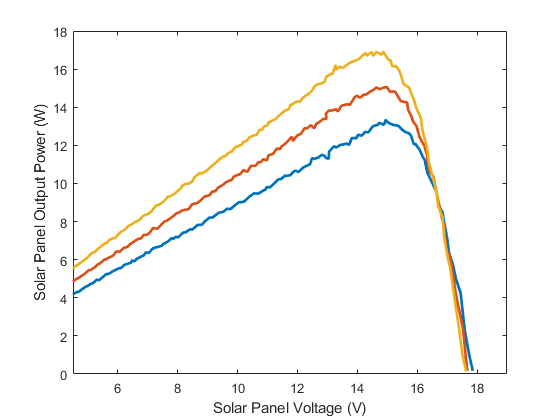SLUAAI1 December 2021 BQ25798
1 Introduction
One defining parameter of a solar panel is its open circuit voltage (OCV). A solar panel’s OCV has a strong negative correlation with the temperature of the solar cells [1] - [3]. Figure 1-1 demonstrates the relationship between the temperature of a solar panel, its MPP voltage (Vmp), and OCV (Voc). As shown, the MPP voltage and OCV change by the same percentage with temperature. As the temperature changes, whether by season or climate, the OCV will also change. Having a solar charger that considers these temperature variations makes a balanced and flexible solar charger. This means that using a MPPT method that combines the real-time OCV of the panel with a fixed percentage is a great approach because the MPP will track the changes of the OCV as shown by Figure 1-1.
The actual voltage a solar panel experiences is also heavily related to the load on the solar panel. For example, a weakly irradiated solar panel will maintain its OCV based upon temperature, but the output voltage can lower significantly when a load is applied to the panel. Figure 1-2 demonstrates the power-voltage characteristic under different irradiance conditions. The peak in the P-V curves is known as the MPP.
To maximize the power given to the battery, a MPPT algorithm is needed. The first and simplest method is FOCV. In this method, the OCV of the panel is measured and the input is regulated at a certain percentage of the OCV. The second method is Perturb & Observe (P&O). In this method, you systematically perturb the input voltage operating point until the maximum power is found. The third method is called Incremental Conductance and collects panel voltage and current information until the derivative of the panel power with respect to voltage is zero [4]. This would indicate the MPP has been found.
 Figure 1-2 P-V Curve of Solar Panel Under
Increasing Irradiances
Figure 1-2 P-V Curve of Solar Panel Under
Increasing Irradiances